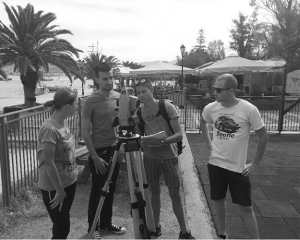Digital Tools for Cultural Heritage Management | Overview
This program introduces you to a broad range of 3D recording and mapping techniques, as well as to methodologies on how to use and analyze spatial data. Furthermore, you will be introduced to the field of managing various aspects of the cultural heritage you will be studying. You will be provided with hands-on instruction in these methods with hands-on demos and exercises in various study areas. GIS will be used to publish the data in cartographic outputs, and to use spatial data for management and analysis of the features under study. Heritage management introduction allows you to get a better understanding of the objects and to facilitate the discussion and process of using these data for the preservation and exploitation of heritage assets for the benefit of communities.
This is an asynchronous program with a multitude of optional live classes. During the online program, you will work on provided data, but you will also record your own data and use online spatial data sources for your own projects. These data will be processed with the appropriate software.
Finally, laser scanning data (point clouds) will be provided by the instructors for further processing, whereas image-based 3D models will be generated soon after the start of the program. During fieldwork, we will focus on the entire workflow from data acquisition to data publication.


